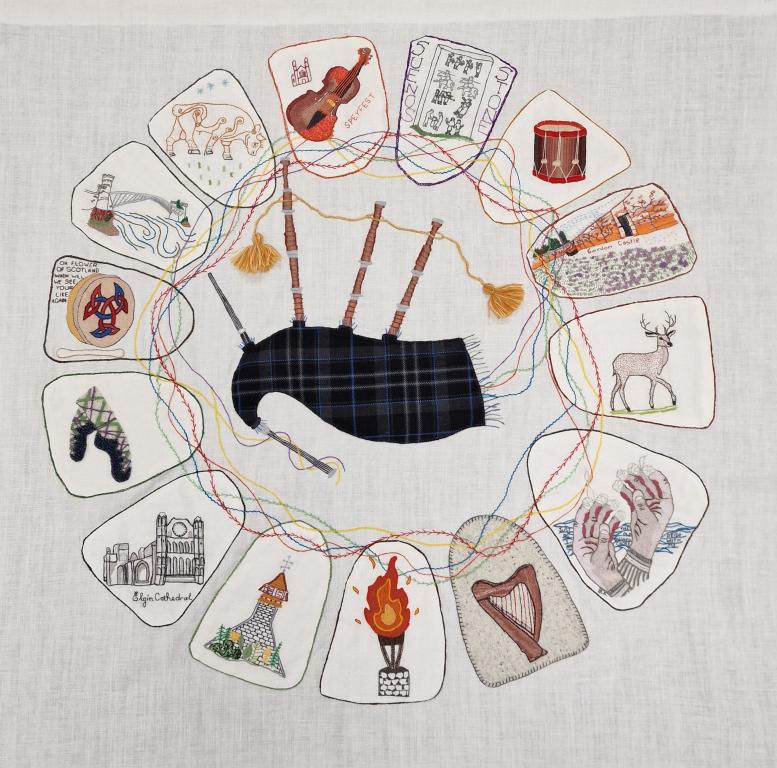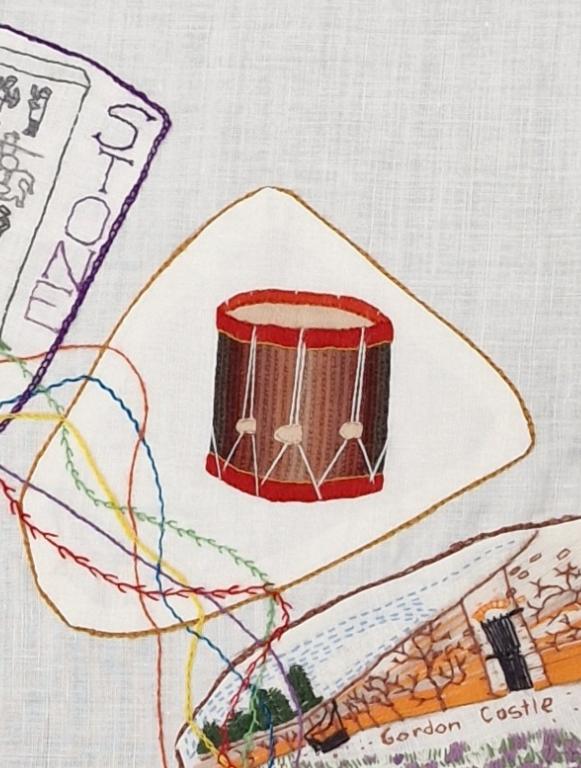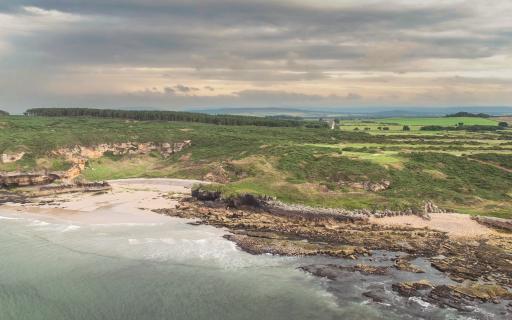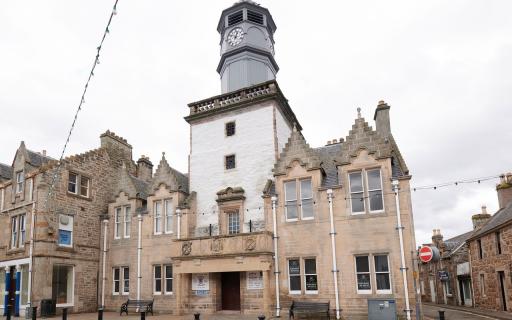
Piob Mhor
The Couthie Couchers came together to stitch into their panel the sights of their local area around Moray and Nairn, and the iconic instruments of the Highlands including a set of beautifully designed tartan bagpipes.
This is their story.
Where exactly the bagpipe came from is much contested. Most histories trace the earliest bagpipe to somewhere in the Middle East or possibly even Egypt, as early as 400 BC. From there the bagpipe, or piped instrument, moved across Europe and was changed and tweaked by many musicians so that we get to something which would have resembled the bagpipe of today.
Although its history is contested, no one will argue that the bagpipe is inextricably linked with Scottish tradition and culture. From pipers playing tunes for highland dancers at games days, to the famous stories of pipers leading soldiers in to battle, to being piped in at your wedding or seeing a pipe band marching through the street on gala days. The sound of the pipes is unmistakable. It stirs the blood and excites the senses.
The bag for our set of pipes is stitched in a deep blue tartan and the drone cords have threaded tassels leaping out of the panel. These elements bring our music to life in a different way, using different stitching styles to create an intricate design.
Around the pipes are our journey stones. They depict personal stories of family history, iconic landmarks around Moray and Nairn such as Sueno's Stone, the Burghead Bull and Elgin Cathedral, as well as other instruments and a highland dancer.
 Bagpipes surrounded by ancient and modern stories from Moray and Nairn.
Bagpipes surrounded by ancient and modern stories from Moray and Nairn.Image provided by Kirstie Campbell
 The Elgin Drum
The Elgin DrumImage provided by Couthie Couchers
The panel includes many instruments such as the clàrsach (harp), fiddle and a drum.
Stitched by Barbel Skoyles, the drum is inspired by the story of the Elgin town drum.
'The town drummer is depicted in the statue on the Main Street of Elgin. His name was William Edward and from c.1762 until his death in c.182,2 he drummed at 4am and 5am to wake up the citizens for the day - many of whom would work in local industry such as fishing. He would then sound the drum again at 9pm to signal curfew. The drum is now in the Elgin Museum.'
Read the stories of the Couthie Couchers
WITH THANKS TO THE COUTHIE COUCHERS SEWING GROUP
This panel was stitched by Kathleen, Deirdre, Amanda, Barbel, Cairine, Cynthia, Elizabeth, Erica, Fiona L, Fiona B, Hayley, Helen, Jane, Lydia, Lynne, Pauline and Sybil who gave their time, skill and energy to completing a fantastic artwork for their area.
If you would like to see the panel up close and admire the detail of their work, you can view the panel at Historylinks, Dornoch. To find out more about the Inverness Castle Experience click here.
EXPLORE MORE STITCHERS STORIES BELOW
Swipe left for more











